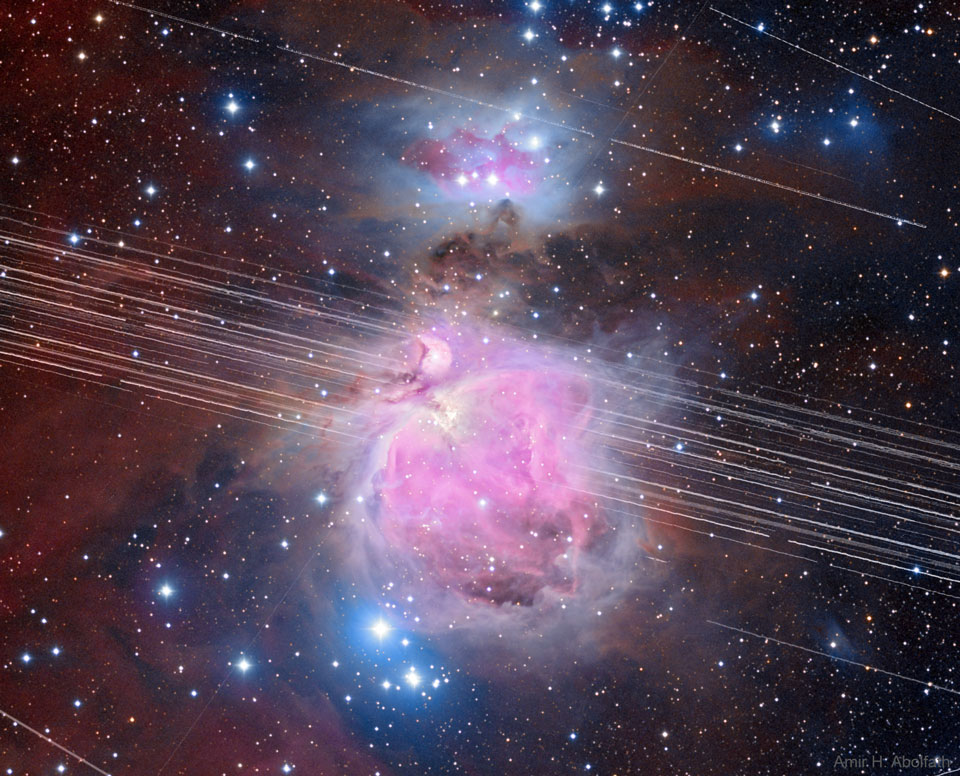2021年06月01日
Satellites over Orion
Image Credit: Amir H. Abolfath
Explanation: What are those streaks across Orion? They are reflections of sunlight from numerous Earth-orbiting satellites. Appearing by eye as a series of successive points floating across a twilight sky, the increasing number of communications satellites, including SpaceX Starlink satellites, are causing concern among many astronomers. On the positive side, Starlink and similar constellations make the post-sunset sky more dynamic, satellite-based global communications faster, and help provide digital services to currently underserved rural areas. On the negative side, though, these low Earth-orbit satellites make some deep astronomical imaging programs more difficult, in particular observing programs that need images taken just after sunset and just before dawn. Planned future satellite arrays that function in higher orbits may impact investigations of the deep universe planned for large ground-based telescopes at any time during the night. The streaks across Orion are not from Starlink but rather satellites in high geosynchronous orbit. The featured picture, taken in 2019 December, is a digital combination of over 65 3-minutes exposures, with some images taken to highlight the background Orion Nebula, while others to feature the passing satellites.
SatCon2 Wokshop 12-16 July 2021: Mitigating Satellite Constellations
Tomorrow’s picture: inner galaxy
猎户座前方的卫星
影像提供: Amir H. Abolfath
说明: 这些划过猎户座的迹线是什么?大多数是由数量众多,掠过视野正在反射阳光的绕地卫星所产生的。这些在肉眼里,酷似掠过暮曙光天空点状亮斑的卫星(包括太空探险公司的星链通讯卫星),数量日益增加,因此让天文学家颇为烦恼。正面来说,星链和类似的星系卫星系统,让日落后的天空更有变化,全球通讯更快速,更把数位科技服务带到偏远的区域。当然也有负面,这些低地球轨道卫星,让深空天文摄影变得更困难,特别是对需要在刚日落后和近日出前进行观测的特殊计画。规划中在更高轨道运转的阵列式卫星系统,则可能会冲击地基大望远镜,在夜间任何时段对宇宙深处进行的探索。这些划过猎户座的迹线,并非源自星链卫星而是极高地球同步轨道上的卫星。这幅摄于2019年12月的主题影像,是由65张3分钟长曝光照片组合而成,其中有些是要突显背景的猎户大星云,另一些则是要捕捉通过视野的卫星。
SatCon2工作室2021年7月12-16日: 减少卫星对星座的影响
明日的图片: inner galaxy



